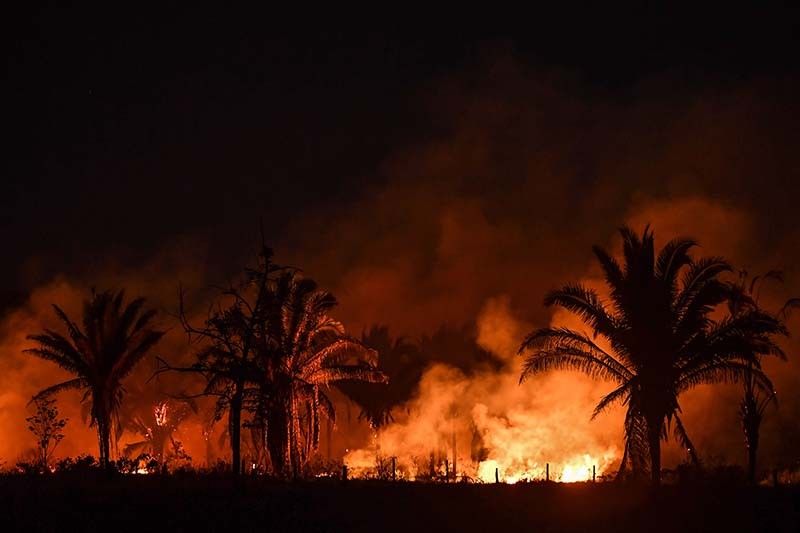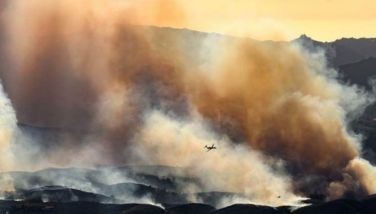Amazon fires 'quicken Andean glacier melt'

PARIS, France — Fires in the Amazon rainforest are likely to increase the rate of melting of Andean glaciers, potentially disrupting water supply for tens of millions of people, scientists said on Thursday.
Images of smoke-filled horizons from blazes burning out of control across the Amazon basin made headlines around the world earlier this year.
The fires are started deliberately, often by farmers clearing land for grazing or crops, and are made significantly worse by deforestation—a phenomenon currently at its highest level in a decade.
A team of researchers in Brazil studied the effect that smoke from the fires might have on glaciers in the Andes—prevailing winds carry dust particles hundreds of kilometres, allowing them to be trapped in snow and ice.
Based on observations and modelling of fires between 2007-2010—a peak period—the team found that aerosols from burning had the potential to increase glacier melting by darkening their surface color.
Pollutants such as black carbon and dust lodged in the ice reduce the glacier's ability to reflect sunlight—known as its albedo—speeding the rates of melting by up to 14 percent.
More than 75 million people rely on water from Andean glaciers, including farmers in the region, meaning the seasonal melt is vital for food supply.
Faster melting could therefore shorten crop-growing periods, limit supplies of drinking water and eventually lead to conflicts over the dwindling resources, said the authors of the study, published in Nature Scientific Reports.
"This cannot be considered a regional issue," said Newton de Magalhaes Neto, from Rio de Janeiro State University's Institute of Geography.
"Instead it has social implications at a continental scale."
And there is likely to be a correlation between deforestation, where vast swathes of land are razed to grow crops or raise cattle, and glacier melt rates, as global food demand rises.
"Considering the proximity of the Amazon basin to the tropical Andean glaciers and the dimensions of Amazonian biomass burning we expect greater melt rates as more Amazon gets deforested," Neto told AFP.
The Intergovernmental Panel on Climate Change in September warned that glaciers were losing 280 billion tonnes of ice every year, contributing 35 percent of sea level rises.
Neto said the main threat to the Andean glaciers was still climate change, as warmer oceans would contribute to the Amazon drying out, meaning fires would spread further.
- Latest
- Trending

































